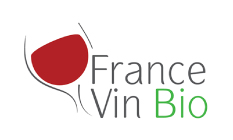Organic viticulture is part of a regulatory framework. The policymakers and institutions working on this framework are national and European.
- in France: the Ministry of Agriculture, INAO, ANSES
- in Europe: the European Commission, the European Parliament and the European Council.
Several issues are particularly important for the future of the sector. The positions of the professionals of the organic wine sector have been supported by France Vin Bio on the following subjects.
The use of Copper
Copper is used in organic agriculture against mildew. Its use is restricted by regulation in organic viticulture. The wine growers can use 6kg/ha/year on average over 5 years. In the absence of alternatives, the professionals want to carry on using it.
The European Commission published the Implementing Regulation 2018/1981 renewing the approval of the active substances copper compounds in the EU Official Journal dated 14 12 2018.
This regulation, applicable to all viticulture, specifies in its annexes that “Only uses that result in a maximum total application of 28kg of copper per hectare over a period of seven years are authorized”, and that “In particular, Member States may decide to set a maximum annual application rate not exceeding 4 kg/ha/year”.
In France, as part of the renewal of the Marketing Authorisations (MA) for phytosanitary products, the ANSES (National Health Security Agency for food, environment, and work) only issues MAS with a strict use of 4 kg/ha/year.
France Vin Bio believes that the ANSES practice of issuing marketing authorisation will quickly lead to finding on the market only cupric products usable at 4 kg/ha/year and will not allow levels to be taken over a seven-year average.
As a result, significant crop losses are likely to be expected in years of high downy mildew pressure.
France Vin Bio believes that alternatives to the use of copper do not make it possible to control downy mildew in case of strong pressure. The Ministry of Agriculture has published the “Road Map for Reducing the Use of Copper in Agriculture”. This document presents interesting proposals of the INRA (National Institute for Agricultural Research) about reducing copper doses.
Limits of the alternatives to copper
- Resistant varieties are interesting as a medium and long-term solution. First, the decrees of controlled designation of origin must be amended, and the stable character of the resistance to the mildew checked. Then we have to create the market for these types of vines whose aromatic profiles are different from the current type of vines, to have the availability of the plants, integrate the replanting of resistant type of vines in the planting management. The organic vineyard will not be replanted in resistant grape varieties for many years (around 20 to 25 years).
- Biocontrol techniques and natural preparations have extremely limited effectiveness in the event of strong pressure.
- improving the quality of spraying is an interesting lever, but it has limits and has a cost for producers.
- decision support tools have limitations and should be used as a complement to field observation. Gains at this level appear to be reduced.
France Vin Bio believes that the strict use of copper at 4kg/ha/year coupled with the lack of alternative solutions will lead to poor control of mildew in case of strong pressure. France Vin Bio is therefore in favour of maintaining the use of copper at 4 kg/ha/year on average with the possibility of using more or less according to the mildew pressure until reliable alternatives are found. France Vin Bio is also in favour of renewing the authorization for the use of copper after 2025.
Non treatment zones around residential areas (ZNT riverains)
The Government has decided on measures to protect people when protection products are used near residential areas.
The decree raises the fundamental question of residents and winegrowers living together, in a context of agricultural land going to housing estates.
Protecting agricultural populations, local communities, water resources, soils, etc. while maintaining an active rural fabric, which makes it possible to have an economically viable and ecologically responsible production, presupposes the involvement of all. A dialogue must therefore be established between all.
Non-treatment zones are only a partial response to this problem. For France Vin Bio, the distances to be respected must consider the dangerousness of phytosanitary products.
To be truly effective, the non-treatment zones constraint must not apply to biocontrol products or products used in organic agriculture, which are the least hazardous to human health and the environment.
France Vin Bio therefore wants the derogation in favour of biocontrol products to be extended to products usable in organic agriculture. Such an extension would ensure that areas close to buildings are treated in an organic or environmentally responsible manner.
Such a positioning would be an important gesture from the Government to encourage winemakers to switch to organic agriculture.
